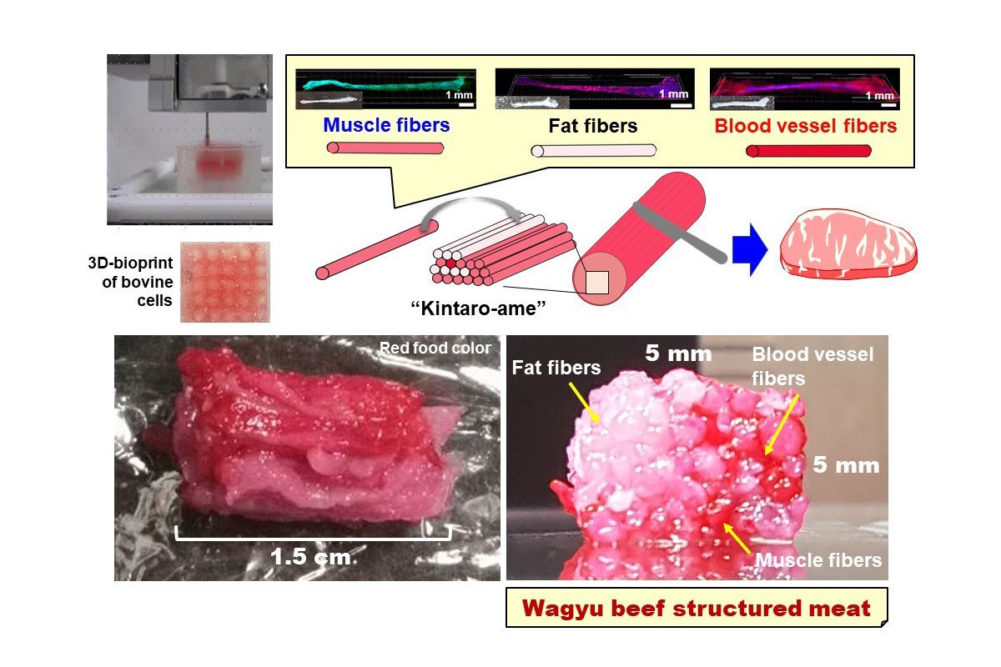OSAKA, JAPAN – Food scientists in Japan have discovered how to utilize 3D bioprinting to produce Wagyu cultured beef. Using isolated stem cells from Wagyu cattle, researchers from Osaka University said the technology also facilitates the creation of customized beef, tailored to fat and taste specifications. The marbling (known as “sashi” in Japan) was achieved by manipulating bovine satellite cells and adipose stem cells, which is a process that can be applied to create specific meat attributes.
“By improving this technology, it will be possible to not only reproduce complex meat structures, such as the beautiful sashi of Wagyu beef, but to also make subtle adjustments to the fat and muscle components,” said Michiya Matsusaki, senior author of the research.
To create the Wagyu meat, scientists used individual fibers containing muscle, fat, or blood vessels and were able to fabricate the meat from those cells using bioprinting. The fibers were arranged in 3D to duplicate the structure of real Wagyu meat.
Current methods used to create cultured meat utilize what the researchers said are unorganized muscle fiber cells that fall short of reproducing the complex structure of traditional beef.
“Using the histological structure of Wagyu beef as a blueprint, we have developed a 3D-printing method that can produce tailor-made complex structures, like muscle fibers, fat, and blood vessels,” said lead author, Dong-Hee Kang.


